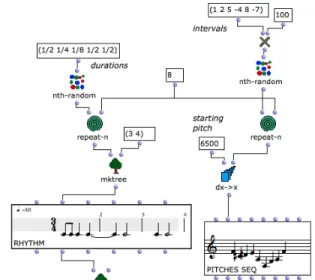Reactive Visual Programs for Computer-Aided Music Composition
Texte intégral
Figure




Documents relatifs
Particularly, the role of the synthesis process added to the maquette (which would not necessarily produce sound but could be a component in a higher-level
By merging the wedges on two incident half-edges into one set of wedges on an edge, unnecessary wedges can be efficiently pruned during the wedge propagation process and the number
Based on the discrete exponential map, our method can efficiently compute the Rie- mannian center and the center of mass for any geodesic Voronoi diagram.. The second algorithm uses
This article examines instrumental support issues of complex technological objects simulation on the level of specialized container and string libraries – tools, aimed for
In this paper we will focus on pedagogical approaches via HexaChord, a computer-aided music analysis environ- ment based on spatial representation of musical objects inspired by
The submission evidences the innovative aspects of that work and, more generally, of the role of the Computer Music Designer through consideration of a number of Max patches
Automatic speech recognition (ASR) performance is evaluated under several adaptation paradigms in Sec- tion 5 using utterances collected from a population of impaired children and
putations Selmer (1954) made the totally unexpected conjecture: the difference between the upper bound and the actual rank is